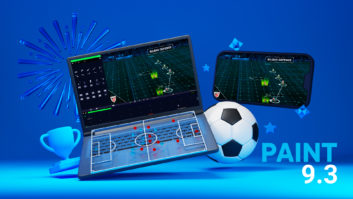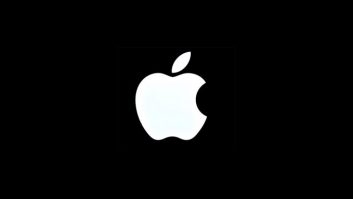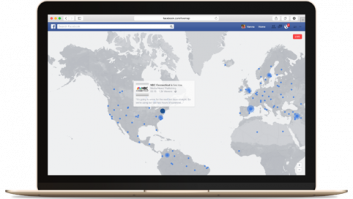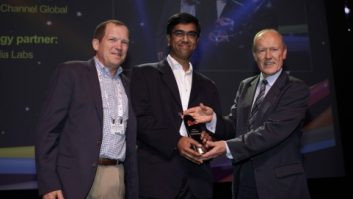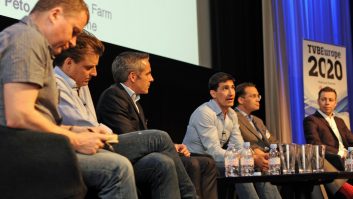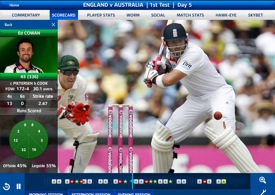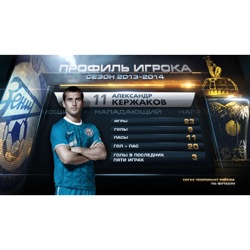
In 2012, the Russian Football Premier League (RFPL) launched its own media subsidiary and broadcasting operation known as Liga-TV. This production arm distributes the official RFPL channel Nash Football (НАШ ФУТБОЛ), featuring all league games live in both SD and HD versions.
At the same time, a partnership with the pay-tv operator NTV Plus saw the broadcaster take charge of the overall television production operation from its Moscow base. The move allowed the RFPL live matches to be seen in more households – adding more subscriptions and, therefore, more revenue for the League. The project also enabled production techniques to be enhanced so that coverage of the RFPL matches would match those of the English and German sports channels.
In September this year, and as part of the plan to provide the highest level of production, Liga-TV commissioned a new graphics system that would bring more informative and dynamic graphics to its production. That package, which is used both in the OB trucks and for studio presentations, was put together by Canadian creative agency, Motion Path, in conjunction with Orad.
“This is a complete graphics package for the coverage of the Russian football league, including in-game and studio production, with elements such as full-screen and lower-third graphics presenting complex and sophisticated football statistics in a new and exhilarating way,” states Ofir Benovici, vice president of Marketing at Orad. “The full graphics solution includes a rendering platform based on Orad’s new HDVG 2GO, 3Designer authoring tool, and 3DPlay that is used as the sports controller. All commonly used video files are supported, including codecs that support alpha channels.”
The package also enables Liga-TV to display line-ups that include clips of the players, yellow cards, team captains, comparison between groups according to defined criteria, player comparisons including top three in each category such as ‘best forward’, ‘goal keepers’ and so on. In addition, graphics provide referee statistics and a smart game calendar showing upcoming games in a dynamic presentation.
During the game, on-screen clocks provide statistical information, such as corners, which player held the ball the most, substitutions and fouls. Orad’s system automatically triggers the relevant player’s clips according to the data that comes online from the statistical database. In addition, the system enables the operator to manually incorporate relevant clips.
At the end of the game, Liga-TV presents full-screen graphics showing each player’s statistics during that game, along with relevant video footage. The system also allows viewers to select their ‘man of the match’ with voting figures appearing on screen.
Integrating data
“The statistics and player profile graphics can be created in advance by the broadcaster via Orad’s 3Designer authoring tool,” explains Benovici. “When implemented with 3DPlay, the appropriate graphics can be used in the production environment. By seamlessly integrating with the league’s statistic and viewers’ voting databases, multiple data entry is avoided. In addition, Orad’s 3DPlay can also be integrated to all commonly used scheduling and automation systems.”
Benovici says that, in general, Orad’s systems can integrate with different types of gallery equipment such as switchers, consoles and so on. In this particular project, however, the operation is manually controlled by an operator and the output of Orad’s system is fed as fill and key into the switcher. Although fed manually, a number of the realtime graphics operations are carried out in automatic mode.
“Working in a live – and fast-moving – environment such as a football game can be highly pressured, so we design systems with automatic and manual modes. In the automatic mode, the system inputs all the relevant information, team logos, player videos, etc, directly from the database, facilitating the workflow. In the event of a problem, the user can override the automatic mode and manually operate the systems. In addition, Orad’s ‘smart’ logic eliminates user error by ensuring that no conflicting graphics are displayed.”
He adds that the provision of a linear key enables the system to work both in downstream and upstream workflows. The systems can be integrated simultaneously to several databases and can show relevant graphics/videos/statistics live. “Orad’s systems support in this project an SQL server for statistical data, Excel for backup and manual mode, and an additional SQL server for the viewer voting database. The whole system is controlled by Orad’s 3DPlay from a PC.”
Dynamic animations
Design of the graphics used by Liga-TV was handled by Motion Path, based in Montreal. “Design for live sports events has always been a focal point of what we do at Motion Path,” emphasises Anton Maximovsky, president and CEO of the company. “The development of realtime graphics for sports is a complex task, both creatively and technically. The aim of this project for Liga-TV was to create a package of realtime, data-driven 3D graphics that would bring the quality of the broadcast to the new level. It was decided to depart from the traditional style and to embrace the bold dynamic and engaging style of graphics.”
He reports that to achieve that result, Motion Path created its graphics in a virtual 3D space that looks and behaves like a computer game. Whenever possible, the designers use video portraits of the players instead of still photographs. “There are plenty of dynamic animations and transitions morphing one graphic into another.”
Maximovsky continues, “the project was accomplished on Orad’s 3Designer, a tool that allowed us a great degree of creative freedom. We believe that we managed to push the traditional boundaries of realtime graphics by designing the package for RFPL that looks like high-end post production material.
“Starting the project, we decided that we would not accept compromises either in visual nor in technical aspects of this project. As a result, RFPL received an aesthetically rich and sophisticated package with the Nash Football brand being the core element. We truly believe that a wealth of interesting and relevant data for true football fans is being presented clearly and with a dynamic look.”
By Philip Stevens
